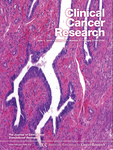Clin Cancer Res:一种利用外周血筛检大肠癌的新法或面世
| 导读 |
近年来,随着生物芯片技术和血液标本保存技术的不断发展,外周血肿瘤标志物已成为大肠癌研究的热点之一。近期,由复旦大学附属肿瘤医院-梅里埃研究所实验室科研人员完成了对外周血18个基因表达谱检测,结果显示外周血分子标记物检测的灵敏度显著优于传统的FOBT方法。该研究已发表于《临床肿瘤研究》(Clinical Cancer Research)。
... |

近年来,随着生物芯片技术和血液标本保存技术的不断发展,外周血肿瘤标志物已成为大肠癌研究的热点之一。近期,由复旦大学附属肿瘤医院-梅里埃研究所实验室科研人员完成了对外周血18个基因表达谱检测,结果显示外周血分子标记物检测的灵敏度显著优于传统的FOBT方法。该研究已发表于《临床肿瘤研究》(Clinical Cancer Research)。
大肠癌是一种常见的恶性肿瘤,其发病率在恶性肿瘤中居第三位。临床研究证实,早期发现大肠癌及癌前病变可显著降低大肠癌的发病率和死亡率。大肠癌筛检方法主要包括粪便隐血试验(FOBT)和结肠镜检查。结肠镜检查是大肠癌诊断的金标准,但患者的依从性较差,限制了这一方法的广泛应用。FOBT是非侵入性的,但其灵敏度较低,尤其是在疾病的早期。
本研究中,研究者采用全基因组生物芯片分析100例大肠癌患者与100例正常对照的外周血基因表达谱,筛选出52个显著差异表达基因;并通过RT-PCR技术进一步验证了18个基因,构建分子预测模型,用于大肠癌的检测。在包含160例样本的独立验证研究中,预测模型的敏感度和特异性分别为84%和88%;分类准确性为86%;ROC曲线下面积达到0.94。上述结果显示,外周血分子标记物检测的灵敏度显著优于传统的FOBT方法。同时,外周血分子标记物检测技术要求简便,只需抽取2.5毫升血液,即可在数小时内得出结果,创伤性小,患者依从度高,利于连续动态检测和人群的大规模筛查。
复旦大学附属肿瘤医院-梅里埃研究所联合实验室负责人孟夏博士表示,历经了多年对数据的分析和验证,生物梅里埃公司或将在近期启动该研究成果的商业产品化运作。
相关阅读:
复旦大学附属肿瘤医院-梅里埃研究所实验室
中文综述:
外周血基因表达谱检测在大肠癌筛查中的应用研究进展
英文原文链接:
Identification and Validation of a Blood-Based 18-Gene Expression Signature in Colorectal Cancer
Purpose: The early detection of colorectal cancer (CRC) is crucial for successful treatment and patient survival. However, compliance with current screening methods remains poor. This study aimed to identify an accurate blood-based gene expression signature for CRC detection.
Experimental Design: Gene expression in peripheral blood samples from 216 patients with CRC tumors and 187 controls was investigated in the study. We first conducted a microarray analysis to select candidate genes that were significantly differentially expressed between patients with cancer and controls. A quantitative reverse transcription PCR assay was then used to evaluate the expression of selected genes. A gene expression signature was identified using a training set (n = 200) and then validated using an independent test set (n = 160).
Results: We identified an 18-gene signature that discriminated the patients with CRC from controls with 92% accuracy, 91% sensitivity, and 92% specificity. The signature performance was further validated in the independent test set with 86% accuracy, 84% sensitivity, and 88% specificity. The area under the receiver operating characteristics curve was 0.94. The signature was shown to be enriched in genes related to immune functions.
Conclusions: This study identified an 18-gene signature that accurately discriminated patients with CRC from controls in peripheral blood samples. Our results prompt the further development of blood-based gene expression biomarkers for the diagnosis and early detection of CRC.

来源:生物谷
 腾讯登录
腾讯登录
还没有人评论,赶快抢个沙发